Results 6,751 to 6,760 of 12095
Thread: Anandtech News
-
-
02-26-17, 06:53 AM #6752
Anandtech: MWC 2017: Huawei P10 and P10 Plus Press Event Live Blog
We're here at MWC waiting for Huawei's Press Event to start. We're expecting to see the P10 and P10 Plus, given that their names were on the front of the building when we entered. Starts at 2pm CET!
More...
-
02-26-17, 06:53 AM #6753
Anandtech: Announcing the LG G6: Snapdragon 821, 18:9 Display, IP68 Waterproof
Today in Barcelona, LG officially unveiled the G6, the next installment of the venerable G-series that's now classified as a lower-end flagship below LG’s V-series. Like the G5 before it, the G6 receives a significant makeover, with an all-new design, a bigger display, and updated hardware.
In an effort to boost sales last year, LG modernized the G5’s design and construction and gave it a pair of features that set it apart from Korean rival Samsung’s Galaxy phones. It switched from a traditional plastic construction to a thin, all-aluminum chassis that was painted over to hide the antenna lines. The previous model’s rear-mounted volume controls were relocated too.
The G5’s most innovative feature was its detachable chin module that granted access to the battery and allowed for quick battery swaps, a unique ability for a metal phone. This base module could also be replaced with additional accessories, making the G5 one of the few attempts at a modular smartphone. Unfortunately, the initial modules, the LG CAM Plus and LG Hi-Fi Plus, were uninspiring, and more compelling options failed to materialize. Swapping modules was also clunky because it required removing the battery and rebooting the phone, an issue not shared with Motorola’s superior Moto Mod solution that was introduced alongside its new Moto Z family.
The G5’s modular gamble failed to pay off, and its other features were not enough to justify its higher price, leading to poor sales that fell well below LG’s expectations. Increasing competition from Chinese OEMs is also placing additional pressure on LG, which can ill afford another misstep. It's not too surprising then to see LG take a more conservative approach with the G6, focusing on correcting the previous model’s shortcomings rather than adding radical new features to make it stand out.
1 - Only in select markets Korea, Hong Kong, Asia, India, CISLG G Series LG G6 LG G5 SoC Qualcomm Snapdragon 821
(MSM8996 Pro)
2x Kryo @ 2.34GHz
2x Kryo @ 2.19GHz
Adreno 530 @ 653MHzQualcomm Snapdragon 820
(MSM8996)
2x Kryo @ 2.15GHz
2x Kryo @ 1.59GHz
Adreno 530 @ 624MHzDisplay 5.7-inch 2880x1440 (18:9) IPS LCD 5.3-inch 2560x1440 IPS LCD Dimensions 148.9 x 71.9 x 7.9 mm
163 grams149.4 x 73.9 x 7.7 mm
159 gramsRAM 4GB LPDDR4 4GB LPDDR4-3188 NAND 32GB / 64GB1 (UFS 2.0)
+ microSD32GB (UFS 2.0)
+ microSDBattery 3300 mAh (12.54 Wh)
non-replaceable2800 mAh (10.78 Wh)
replaceableFront Camera 5MP, f/2.2, wide-angle (100°), auto HDR, screen flash 8MP, 1/4" Toshiba T4KA3, 1.12µm pixels, f/2.0, HDR, screen flash Rear Camera Primary: 13MP, Sony IMX258 Exmor RS, 1.12µm pixels, f/1.8, PDAF, wide-angle (71°), OIS, auto HDR, dual-tone LED flash Primary: 16MP, 1/2.6" Sony IMX234 Exmor RS, 1.12µm pixels, f/1.8, Laser AF, 3-axis OIS, HDR, color spectrum sensor, LED flash Wide Angle: 13MP, Sony IMX258 Exmor RS, 1.12µm pixels, f/2.4, PDAF, wide-angle (125°), auto HDR, dual-tone LED flash Wide Angle: 8MP, Sony IMX268 Exmor RS, 1.12µm pixels (assumed), f/2.4, wide-angle (135°), Laser AF, OIS, HDR, color spectrum sensor, LED flash Modem Qualcomm X12 (Integrated)
2G / 3G / 4G LTE (Category 12/13)Qualcomm X12 (Integrated)
2G / 3G / 4G LTE (Category 12/13)SIM Size NanoSIM NanoSIM Wireless 802.11a/b/g/n/ac 2x2 MIMO, BT 4.2, NFC, IrLED, GPS/GNSS Connectivity USB 2.0 Type-C, 3.5mm headset USB 2.0 Type-C, 3.5mm headset Additional Features QC 3.0 fast charging, wireless charging (WPC & PMA)2, IP68 environment protection, Hi-Fi Quad DAC3 QC 3.0 fast charging, modular design Launch OS Android 7.1 with LG UX 6.0 Android 6.0.1 with LG UX 5.0
2 - Only for US
3 - Not available in US, EU, South America, MEA
The G6’s larger 3300 mAh battery should help alleviate one of our complaints about the G5: poor battery life. It’s still a bit smaller than the batteries in the Pixel XL (3450 mAh) and Galaxy S7 edge (3600 mAh), both of which have slightly smaller 5.5-inch AMOLED displays, but the G6 should last noticeably longer than the G5. With the Galaxy Note7 recall still fresh in people’s minds, LG made the point that the separator between the anode and cathode in the G6’s battery is 15.5µm thick versus 8.5µm for the Note7.
The G6 also gets a complete redesign. LG has abandoned the G5’s modularity, simplifying the phone’s construction. This means that the G6’s battery is sealed inside and no longer removable too. The chassis is still aluminum, with internal bracing to increase rigidity, but there’s a piece of glass covering the plastic back with a brushed aluminum finish below. Its edges are slightly beveled where they meet the metal’s polished chamfer, improving in-hand feel.
The dual rear camera module, which looks like a pair of eyes staring you, now sits flush with the back, just above the fingerprint sensor that also works as a power button. The G6 still comes with a 3.5mm headphone jack on the top edge, and the single, downward-firing speaker sits to one side of the USB Type-C port on the bottom.
The interesting change is around front, however. Overall display size increases to 5.7-inches, but it only gets taller and not wider, resulting in an 18:9 aspect ratio (instead of the more common 16:9) that increases screen area while keeping the phone narrow enough to easily hold in one hand. LG has modified its built-in apps to take advantage of the extra screen height, including the camera, which has room to show a strip of image thumbnails next to the camera controls. The corners of the IPS LCD are also rounded instead of sharp angles, which improves screen durability by reducing stress concentrations, according to LG’s testing, and matches the rounded corners of the frame and the rounded graphical elements in LG UX 6.0.
Companies continue to chisel away at the bezels surrounding the display. While the G6 falls a little short of Xiaomi’s nearly all-screen Mi MIX, it still achieves a screen-to-body ratio over 80%. With the smaller bezels, the G6 is actually shorter and narrower than the G5 and a little shorter than the Galaxy S7 edge even though it has a smaller 5.5-inch display.
Unlike the outside, the hardware inside the G6 remains relatively the same. The Snapdragon 820 SoC gets replaced by the Snapdragon 821, which bumps peak frequencies to 2.19GHz and 2.34GHz for the two lower-power and two higher-performance Kryo CPU cores, respectively. The Adreno 530 GPU also gets a higher operating point. The real-world difference between the Snapdragon 820 and 821 is small, however. An internal heat pipe covers the SoC and redistributes heat along the phone’s left edge, which should help reduce thermal throttling.
After announcing the Snapdragon 835 last fall and releasing more details at CES, most people assumed the G6 would receive Qualcomm’s latest SoC. Initial supply seems to be limited, though, for the first product to use Samsung's new 10nm process, putting LG and other OEMs launching flagship phones in Q1 2017 in a difficult position: either delay their products or move forward with last year's Snapdragon. Going with the 821 does give LG a time-to-market advantage over Samsung's Galaxy S8, which is launching later than usual.
LG is sticking with 4GB of LPDDR4 RAM for the G6 while other flagships are moving to 6GB or more, although it should still be enough for heavy multitasking. Internal storage is stuck at 32GB, although select Eastern markets will see a 64GB option available. Additional storage can be added with a microSD card.
Last year LG gave the G5 a dual rear camera. Unlike systems from Huawei, which combine the output of RGB and black and white sensors to improve image quality, the G5’s cameras worked independently, providing a pseudo-zoom feature that switched between a short focal length lens and an even shorter wide-angle lens.
The G6 uses a similar dual rear camera setup, except both use the same 13MP Sony IMX258 sensors. This should improve quality for the wide-angle camera that used an 8MP sensor before, fully half the resolution as the G5’s main camera. The balanced sensors and Qualcomm’s Optical Zoom feature provided by the Snapdragon SoC eliminate the stutter or pause that would occur when switching between the two cameras. This transition is now perfectly smooth on the G6 other than a slight shift in perspective caused by the different focal lengths.
The primary rear camera has OIS (not wide-angle camera), but the G5’s hybrid autofocus system, which combined contrast AF, laser AF, and phase detect AF (PDAF), is gone. The G6 still supports contrast and PDAF, but this is definitely a step backwards when even mid-range devices are adopting hybrid autofocus systems that combine three or four different AF methods. The separate color spectrum sensor, which helped set white balance, is also gone. These omissions seem like a cost-cutting move to make room for some new features.
One new trick for the G6 is wireless charging. It supports both the WPC and PMA standards, but this feature is only available in the US. LG says its market research revealed that wireless charging is a lower priority in other countries, and it did not want to increase cost by including features people would not use. The G6 still includes Qualcomm’s Quick Charge 3.0 fast-charging technology, though.
The G6 also adds IP68 dust and water resistance. This rating means it’s completely sealed against dust and can remain immersed in 1.5m of water for up to 30 minutes. Select markets will also get LG’s Hi-Fi Quad DAC setup for improved audio quality when using headphones. Unfortunately, customers in the US, EU, South America, and MEA countries will not get the Quad DAC and will have to make do with sound more typical of a smartphone.
The G6 comes in three different colors—black, silver, and white—and will be available for sale in South Korea within days. LG has not disclosed pricing or availability in other countries yet.
More...
-
02-26-17, 08:40 AM #6754
Anandtech: Huawei Launches the P10 and P10 Plus, in Green
Today Huawei is unwrapping their latest mainstream device, evolving from the P8 and P9 into the P10. The yearly cadence regularly brings high-level design features from their Mate series into the P-series several months later, and so naturally the P10 gets the latest HiSilicon Kirin 960 SoC with an integrated Cat12/11 modem. As with the last versions, the P8 had the P8 Plus, the P9 had the P9 Plus, the P10 will also be paired with the P10 Plus, featuring near-same internals but with a larger screen and a few extra premium features.
To address today’s headline, Huawei is working with Pantone for the material design of the new P-series devices. Under the heading of ‘style’ and matching ‘fashion’, through collaborating with Pantone Huawei is offering the P10 and P10 Plus in Dazzling Blue (similar but slightly different to the Honor 8 design) and ‘Greenery’. It makes for a very striking and green device. Apparently this is the color of the upcoming season, although as Huawei stated at our pre-briefing, much like previous colors they’ve used, they know that they get a polarized reaction to some of the more esoteric color implementations.
Aside from the color, the P10/P10P both use the Kirin 960 silicon, which we saw in the Mate 9/Mate 9 Pro. We’ve done a review of the Mate 9, and are putting some finishing touches to a Kirin 960 deep dive with some back and forth with HiSilicon on a few of the numbers. Under the hood Kirin 960 is the first mobile SoC to use ARM Cortex A73 cores, which the SoC combines four of in a big.Little with a set of ARM Cortex A53s. The Kirin 960 is also the first SoC to use ARM’s latest Mali ‘Bifrost’ architecture, under the G71 heading, and the 960 uses an MP8 configuration. This is all with TSMC’s 16FF+ node. Huawei also integrates its own modem, suitable for Cat 12 download and Cat 11 upload speeds. The P10 and P10P will mirror each other on the pure SoC, however the P10P will also support 4x4 MU-MIMO support on the DL link due to a couple of additional antenna in the larger device.Huawei P9 & P9 Plus Model P10 P10 Plus P9 P9 Plus SoC HiSilicon Kirin 960
4x Cortex A73
4x Cortex A53 Mali-G71MP8HiSilicon Kirin 955
4x Cortex A53 @ 1.8GHz
4x Cortex A72 @ 2.5GHz
Mali-T880MP4 @ 900MHz (?)RAM 4GB LPDDR4 4GB / 6GB LPDDR4 3 LPDDR3
4GB LPDDR4NAND 64 GB 64 GB
128 GB32GB
64GB
128GBDisplay 5.1" 1080p LCD 5.5" 2560x1440 5.2” 1080p IPS LCD 5.5” 1080p AMOLED Modem LTE Cat 12 DL / Cat 11 UL 2G/3G/4G LTE Cat 6 Camera 20MP Monochrome
12MP RGB
F/2.220MP Monochrome
12MP RGB
F/1.8Dual Rear Camera
12MP Monochrome
12MP RGB
1.25µm pixels
F/2.2 apertureFront Facing Camera
8MP
F/1.9Front Facing Camera
8MP ( 3264 × 2448 )
Sony IMX179 1/3.2"
w/ 1.4µm pixels
F/2.4 apertureBattery 3200 mAh 3750 mAh 3000mAh 3400mAh OS Android 7.1
with EMUI 5.1Android 6.0
with EmotionUI 4.1Connectivity 802.11a/b/g/n/ac
2.4 & 5GHz
BT 4.2, USB-C, GPS/GNSS,
DLNA802.11a/b/g/n/ac
2.4 & 5GHz
BT 4.2, USB-C,
GPS/GNSS,
DLNA, NFCSIM Size NanoSIM +
NanoSIM (w/o microSD)NanoSIM +
NanoSIM (w/o microSD)MSRP 3GB/32GB: 599€ 4GB/64GB 649€ 4GB/64GB 749€
The main obvious difference between the P10 and P10P will be the size of the device, the display, and the battery. The P10 uses a 5.1-inch 1920x1080 LCD, while the P10P rises up to 5.5-inch and a 2560x1440 and a slight curve to the display, similar to the Mate 9 Pro. Neither device uses OLED, so DayDream compatibility may not be a prominent feature here. Despite working with Pantone on the color of the chassis for these phones, I did ask about Pantone working on the color accuracy of the displays (a somewhat regular issue on Huawei devices), but there was no collaboration at that level. On the battery, the P10 has a 3200 mAh unit, while the P10P goes up to 3750mAh, and both support Huawei’s new SuperCharge technology that was bought in with the Mate 9.
One of the big things to notice with the P10/P10P, compared to any other previous mainstream Huawei device, is that the fingerprint sensor has moved from the rear to the front. Huawei did this with the Mate 9 Pro on a small scale, but it is rolled out across the new P-series products. As a result we get an elongated button for multiple gestures, such as swiping for apps, short press for back, long press for home, and the previous on-screen buttons have disappeared. Personally I would find this change taking some time to get used to. On the Mate 9, the ‘active app’ button on the right also yielded the split screen mode during a long press, but that is now moved to a knuckle swipe function.
On the cameras, the P10/P10P has some updates here. The rear cameras use the second generation of Leica technology, similar to the Mate 9, using a 20MP monochrome sensor and a 12MP RGB sensor, both supporting IOS up to 4K. One change is that the P10/P10P will support a monochrome ‘bokeh’ effect due to dual camera apertures, and similar to the RGB mode it will support adjusting the depth after the picture is taken. On the P10 the cameras support f/2.2, but this is upgraded on the P10P for f/1.8. On the software side for the rear cameras, Huawei has a ‘Portrait’ mode, which comes across like a beauty mode for smoother skin and brighter colors, but this is part of the Leica partnership rather than a few other ‘beauty mode’ variants we’ve seen in the past. Both devices use an 8MP front camera.
For capacity variants, both models will offer 4GB DRAM with 64GB variants, however the P10P will also be available in a 6GB/256GB model as well for specific regions only.
On colors, Huawei will offer both devices in ‘Greenery’, Dazzling Blue, Rose Gold, Prestige Gold, Ceramic White, Dazzling Gold, Graphite Black and Mystic Silver. Dazzling Blue will be slightly different, with the rear of the case being textured (via diamond cutting and tooling) to give it a mildly oliophobic structure to repel fingerprints and oils.
One of the new software features will be Highlights, in collaboration with GoPro. This is similar to various apps that already collage images based on location / GPS data / time frame, however the Highlights gallery also implements GoPro software for users to combine images and video with music and transitions into a 30s or 90s video. We asked if the software does all the video transcoding, and works with different resolution video and transcodes that – the answer was yes, but we were unable to get information on the bitrate. Along with Highlights, the P10/P10P get EMUI 5.1, which implements a new ‘Ultra Memory’ feature which recycles memory when certain whitelisted apps are loaded. This is to remove any additional latency from clearing memory pages later in the apps use.
The launch for the Huawei P10 and P10 Plus will be relatively soon, at a variety of price points. (When the press event finishes, we’ll let you know.)
More...
-
02-26-17, 08:40 AM #6755
Anandtech: NGD Launches Catalina: a 24 TB PCIe 3.0 x4 SSD with 3D TLC NAND
NGD Systems this week announced its first SSD that also happens to be one of the highest capacity drives in the industry. The NGD Catalina uses a proprietary controller as well as up to 24 TB of Micron’s 3D TLC NAND memory and apart from capacity, its key feature is a relatively low power consumption.
Before we jump to the Catalina SSD, it makes sense to talk about NGD Systems (formerly known as NxGn Data) itself. The company was founded in June 2013 by a group of people who previously developed SSDs at companies like Western Digital, STEC and Memtech, with the corporate aim to develop drives for enterprise and hyperscale applications. Back in 2014, the company disclosed that its primary areas of interest were LDPC, advanced signal processing, software-defined media channel architecture and in-storage computation capability. NGD has been developing various proprietary technologies behind the Catalina since its inception and the SSD is a culmination of their work.
The NGD Catalina is a large add-in-card with a PCIe 3.0 x4 interface that also supports a Mezzanine connector. Rather than have the NAND on the main card, instead the card uses multiple M.2 modules with Micron’s 3D TLC NAND. The 24 GB version of Catalina carries 12 of such modules, whereas lower capacity SKUs will use a fewer modules. According to NGD, the Catalina consumes only 0.65 W of power per Terabyte (which means ~15.6 W for the 24 GB SSD), but the card still has a 4-pin auxiliary power connector.
Keeping in mind that the SSD has a PCIe 3.0 x4 interface, the peak read/write performance of the drive is limited to 3.9 GB/s. Meanwhile, NGD does not disclose official performance or endurance numbers for the Catalina SSD, but only says that the drive is optimized for read-intensive applications.
The NGD Catalina is based on the company’s proprietary ASIC controller which performs LDPC ECC and enables NGD’s patented Elastic FTL (Flash Translation Layer) algorithm, which we believe is for software defined media channels and is claimed said to lower power consumption of SSDs. We do not know anything about the architecture of the controller used by the Catalina, but back in 2014 the company said (according to EETimes) that its controller used ARM's Cortex-A9 cores that ran a micro-OS based on Linux to perform the usual tasks as well as in-storage (In-Situ) computing.
In-Situ is One of the technologies that NGD has been evangelizing since its establishment. In-storage processing moves a compute function closer to the data and allows executing an app on the drive through the Cortex A9s. This concept makes particular sense for various applications that have to search through and analyze large amounts of data (e.g., Big Data) because it eliminates in-device network bottlenecks (there is no need to transfer all the data to the CPU if basic search functions can be done on the drive). The In-Situ paradigm does not abolish host CPUs or operating systems that make requests and manage operations, but it reduces loads on data buses, network, and CPUs to improve performance and reduce power consumption of data centers. It is not stated if the NGD Catalina supports In-Situ though.
The NGD Catalina is being qualified at various OEMs and is available at various capacity points to interested parties. The company does not talk about exact pricing of its drives because a lot depends on actual capacity points as well as volumes of the SSDs acquired.
Related Reading:
- Micron Announces 5100 Series Enterprise SATA SSDs With 3D TLC NAND
- Seagate Introduces 10GB/s PCIe SSD And 60TB SAS SSD
- Seagate Expands Nytro Enterprise SSD Family with 2TB M.2 XM1440
- HGST Ultrastar SS200 SSD: Up to 7.68 TB, 1.8 GB/s, Dual-Port SAS 12 Gbps
- HGST Ultrastar SN200 Accelerator: 7.68 TB Capacity, 6.1 GB/s Read Speed, 1.2M IOPS
More...
-
02-26-17, 12:13 PM #6756
Anandtech: Samsung Launch the Galaxy Book 10.6-inch and 12-inch: Windows Tablets with
The announcements this year from Samsung are notably muted without the launch of a new Galaxy smartphone, but despite this being a mobile-focused conference in Barcelona this week, there were a few new Samsung devices to whet the appetite. The first is actually more of a PC, in a Windows-10 based tablet called the Galaxy Book, available in either 10.6-inch LCD or 12-inch Super AMOLED display, firing in the line of the Microsoft Surface range. Samsung is primarily aiming these new devices with a nod towards the professional market, but are keen to say that they’re suitable for consumers as well.
At the heart of each tablet is a Kaby-Lake CPU based on Core m for the 10.6-inch or Core i5 on the 12-inch, supported in various configurations of DRAM and storage but both having an integrated LTE Cat 6 modem for wireless support. Aside from the Core i5, and offering an 8GB DRAM/256GB storage model, the key element of the 12-inch device is the Super AMOLED display running at 2160x1440 which Samsung states supports videos in HDR 10-bit. The 10.6-inch version will use a 1920x1280 TFT LCD display.
The larger device will use a 13MP rear camera with autofocus, and both units have a 5MP front facing camera. Aside from microSD support, users will also get USB 3.1 Type-C ports. Both units will come with Windows 10, support for the next generation S Pen using a new 0.7mm tip and in ‘screen off’ mode which allows for note taking without the display being on.
Battery for the units comes in at 30.4 Wh for the smaller one, and 39.04 Wh for the larger display. Samsung is quoting around 10 hours of use for both and both will have access to fast charging. It is worth noting that with the specifications, Samsung lists the 10.6-inch display as supporting 4K30 playback but the bigger unit, with a faster processor, can handle 4K60 playback.
We’re awaiting more information about the modem support, pricing and availability. There might also be a chance for some hands-on time with the units, as it will be interesting to see how well that bezel measures up in normal use.
Gallery: Samsung Launch the Galaxy Book 10.6-inch and 12-inch: Windows Tablets with Kaby Lake





More...
-
-
02-26-17, 12:48 PM #6758
Anandtech: Samsung Launches the 9.7-inch Galaxy Tab S3: Snapdragon 820 with 6000mAh a
Along with the Galaxy Book parts being launched today, Samsung also announced the next generation of Galaxy Tab. The S3 is also an iterative design, with what Samsung believes is the premium Android tablet available in the market. Starting with the Snapdragon 820 SoC, featuring Qualcomm’s custom Kryo cores, the headline message for the S3 is support for HDR 10-bit content as well as a 6000 mAh battery and support for fast charging technology.
Aside from the SoC, the tablet is set to be offered in a 4GB DRAM and 64GB storage option, with a microSD card allowing for another 256GB. Wireless, aside from the 2x2 802.11ac inside, comes via an LTE Cat.6 modem, good for 300 Mbps downlink speed. There is also support for BEIDOU and GALILEO location detection services.
The 9.7-inch display uses Samsung’s Super AMOLED display technology, with a resolution of 2048x1536, and uses quad-stereo speakers tuned by AKG/Harman. Similar to the Galaxy Book, Samsung is promoting its latest ‘Flow’ technology, allowing biometric login for wirelessly tethered devices, and the new S Pen with ‘screen off’ note taking functionality. These are built upon Android 7.0, which along with the SoC is engineered for 4K60 video playback.
The camera setup is similar to the 12-inch Galaxy Book, with a 13MP rear sensor with auto-focus and a 5MP front sensor (other details should emerge on these. Samsung is listing the weight at around a pound for the S3 (434g in LTE mode), and the unit comes with a kickstand.
We’re awaiting more details on the hardware and the implementation, hopefully coming through the press event that’s starting as I’m writing this news post. We’ll hopefully get pricing and availability information too.
Gallery: Samsung Launches the 9.7-inch Galaxy Tab S3: Snapdragon 820 with 6000mAh and HDR



More...
-
02-27-17, 02:11 AM #6759
Anandtech: Sony Launches Xperia XZ Premium and Xperia XZs Phones For US Market
Sony announced today at MWC 2017 that it’s bringing two new premium phones to the US market: the Xperia XZ Premium and Xperia XZs. Both models employ classic Sony styling—a rectangular shape with rounded sides and a flat top and bottom. They also have an aluminum frame sandwiched between front and rear Gorilla glass panels.
There are a few significant differences between the new Xperias. For starters, the XZ Premium will use Qualcomm’s latest Snapdragon 835 SoC, the first to use semi-custom ARM CPU cores and the first SoC available on Samsung’s new 10nm process. The XZs will use the previous generation Snapdragon 820, which uses four fully-custom Kryo CPU cores.
The XZ Premium is the larger of the two with a 5.5-inch TRILUMINOS display, which is notable for being the first panel to combine 4K resolution with HDR image support. It will be interesting to see if the display runs at 4K all the time or just when watching 4K content, scaling back to 1080p otherwise. The XZs puts a 5.2-inch 1080p TRILUMINOS display into a smaller chassis. Both displays support Sony’s X-Reality picture engine and Dynamic Contrast Enhancement technology.New Sony Xperia XZ Series Sony Xperia XZ Premium Sony Xperia XZs SoC Qualcomm Snapdragon 835
(MSM8998)
4x Kryo 280 Performance @ 2.45GHz
4x Kryo 280 Efficiency @ 1.90GHz
Adreno 540Qualcomm Snapdragon 820
(MSM8996)
2x Kryo @ 2.15GHz
2x Kryo @ 1.59GHz
Adreno 530 @ 624MHzDisplay 5.5-inch 3840x2160 HDR IPS LCD 5.2-inch 1920x1080 IPS LCD Dimensions ? x ? x ? mm
? grams146.0 x 72.0 x 8.1 mm
161 gramsRAM 4GB LPDDR4x 4GB LPDDR4 NAND 64GB + microSD 32GB / 64GB + microSD Battery 3230 mAh
non-replaceable2900 mAh
non-replaceableFront Camera 13MP, 1/3.06" Sony Exmor RS, f/2.0 13MP, 1/3.06" Sony Exmor RS, f/2.0 Rear Camera 19MP, 1/2.3" Sony Exmor RS 19MP, 1/2.3" Sony Exmor RS Modem Qualcomm X16 (Integrated)
2G / 3G / 4G LTE (Category 16/13)Qualcomm X12 (Integrated)
2G / 3G / 4G LTE (Category 9/13)SIM Size NanoSIM (Dual SIM option) NanoSIM (Dual SIM option) Wireless Wi-Fi, BT 4.2, NFC, GPS/Glonass Wi-Fi, BT 4.2, NFC, GPS/Glonass Connectivity USB 3.1 Type-C, 3.5mm headset USB Type-C, 3.5mm headset Additional Features QC 3.0 fast charging, IP68 environment protection, high-resolution audio, stereo front-facing speakers QC 3.0 fast charging, IP68 environment protection, high-resolution audio, stereo front-facing speakers Launch OS Android 7.1 Android 7.1
Sealed inside the XZ Premium is 3230 mAh battery, which is a little smaller than I would like to see for a 5.5-inch class phone with a high-resolution 4K display. A smaller chassis means an even smaller battery for the XZs at 2900 mAh. Based solely on this information, I’m a little concerned about battery life, but we’ll have to wait until devices start shipping to see how long they last. Both phones at least support Qualcomm Quick Charge 3.0 fast charging.
In addition to 4GB of RAM, both phones also share some nice audio features, including support for high-resolution audio and stereo front-facing speakers. They also have an IP68 dust and water resistance rating, a feature Sony fans have grown accustomed to.
It looks like both will have single and dual SIM versions. The dual SIM XZs comes with 64GB of internal storage like the XZ Premium, but the single SIM version only comes with 32GB. Storage can be expanded on all models with a microSD card.
Both new XZ models use a similar camera configuration with a 13MP sensor behind an f/2.0 lens on the front and a 19MP sensor on the back. Both sensors are from Sony of course and are an integral part of the new Motion Eye camera system that incorporates technology from Sony’s a-series and Cyber-shot cameras, enabling 5x faster image scanning from the sensor. This means the Motion Eye cameras can capture super slow-motion video at an amazing 960fps (most phones are still stuck at 120fps or at most 240fps). The Predictive Capture feature starts buffering images when the camera detects motion, helping you capture fleeting moments you may have otherwise missed by allowing you to select from four photos taken up to 2 seconds before the shutter button was pressed. There’s also predictive hybrid autofocus that combines motion tracking and a motion prediction engine to lock onto an object and keep it in focus as it moves around.
The Xperia XZ Premium comes in two colors—Luminous Chrome and Deepsea Black—while the Xperia XZs offers three color options—Ice Blue, Warm Silver, and Black. The XZs will be available at select retailers, including Amazon and Best Buy, on April 5 for $699.99 (64GB). The XZ Premium will need to wait for the Snapdragon 835 SoC to become available, so it will not go on sale until later in the spring. Sony is not listing a price for it either, but it will most certainly cost more than the XZs.
More...
-
02-27-17, 07:27 AM #6760
Anandtech: Logic Supply ML100G-50 Fanless Skylake vPro Industrial NUC Review
Passively cooled computing systems carry many advantages. Most of these turn out to be very important for industrial and embedded applications. The low power nature of the NUCs make them the ideal candidate for passive industrial computing platforms. We have already reviewed a number of industrial PCs before. Today, we have an off-the-shelf passively cooled Skylake vPro PC in for review from Logic Supply. Read on for our thoughts on this unique industrial PC.
More...
Thread Information
Users Browsing this Thread
There are currently 6 users browsing this thread. (0 members and 6 guests)





 Quote
Quote
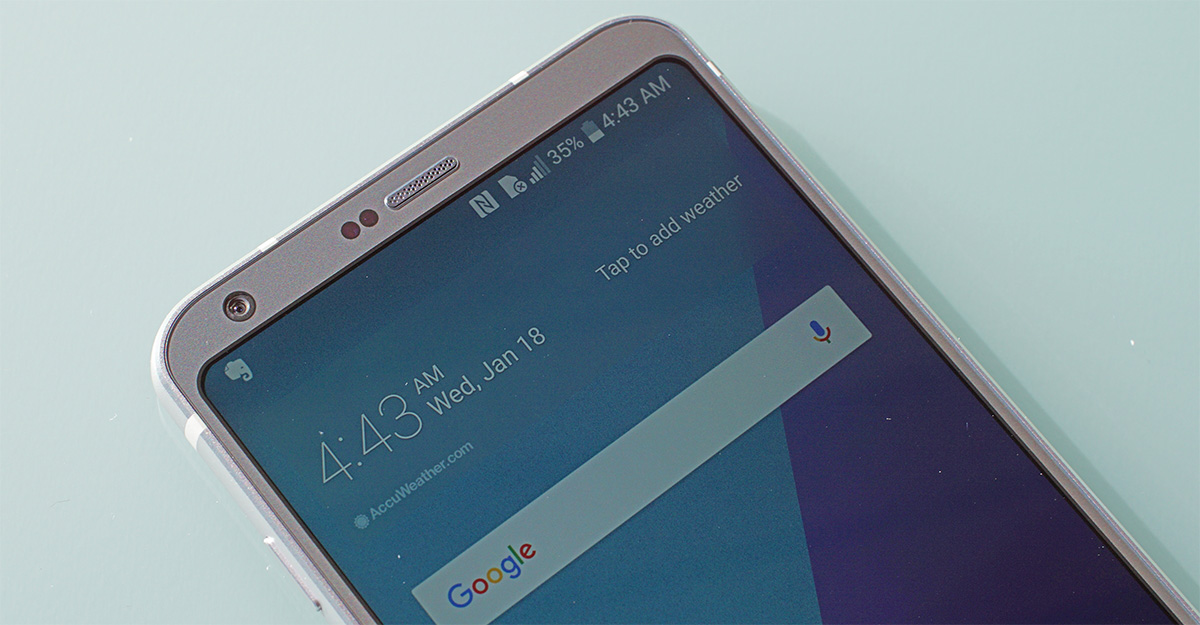
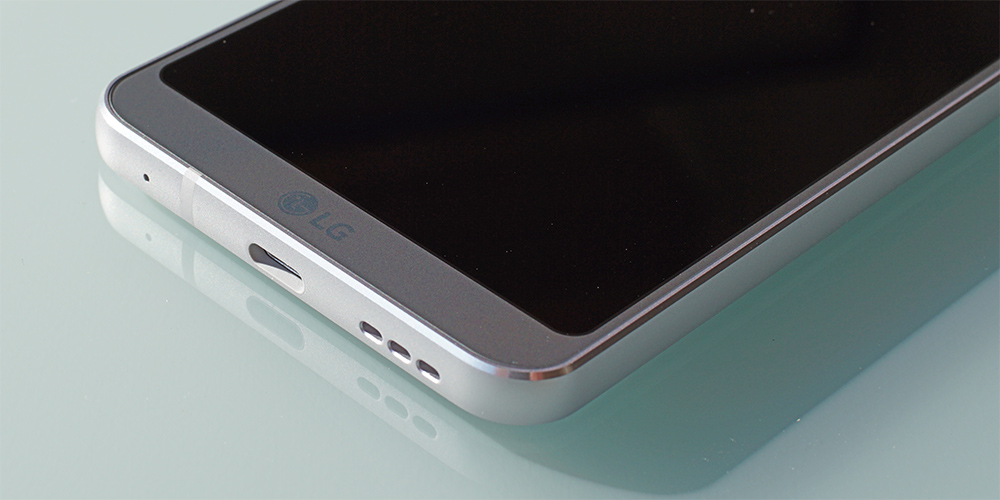
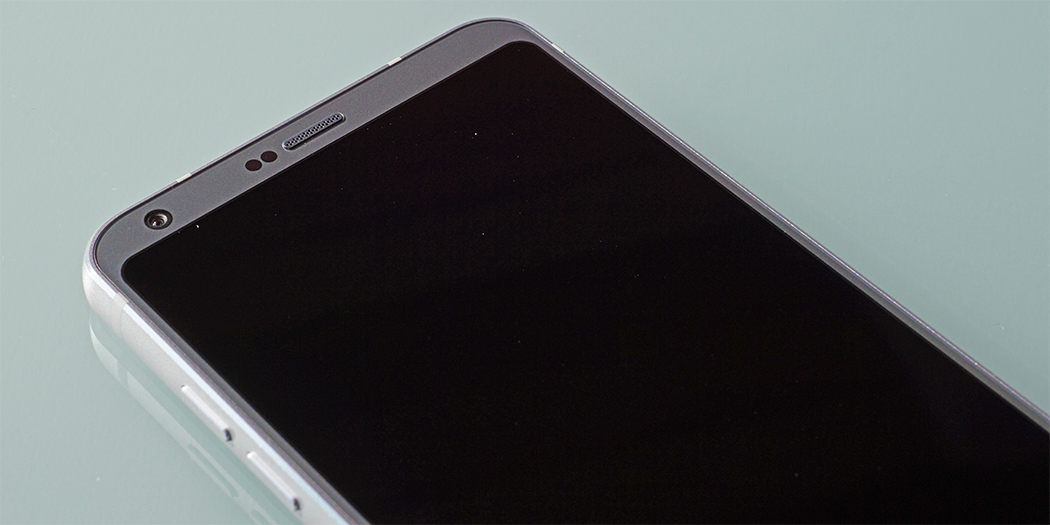
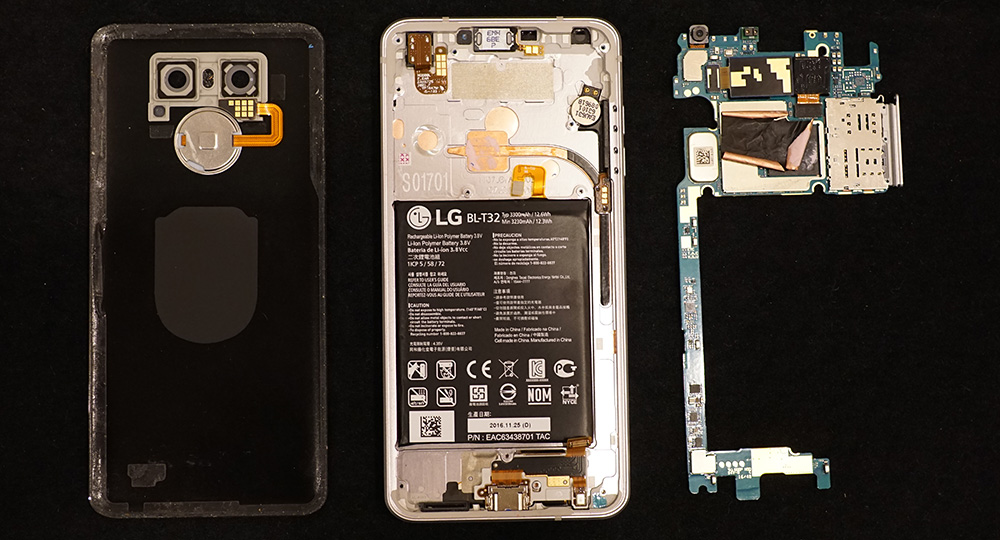
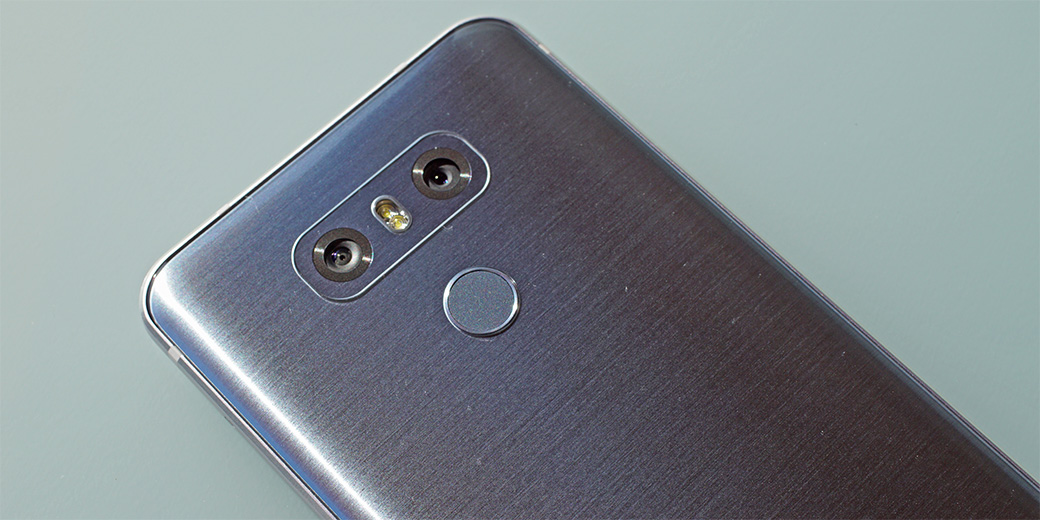
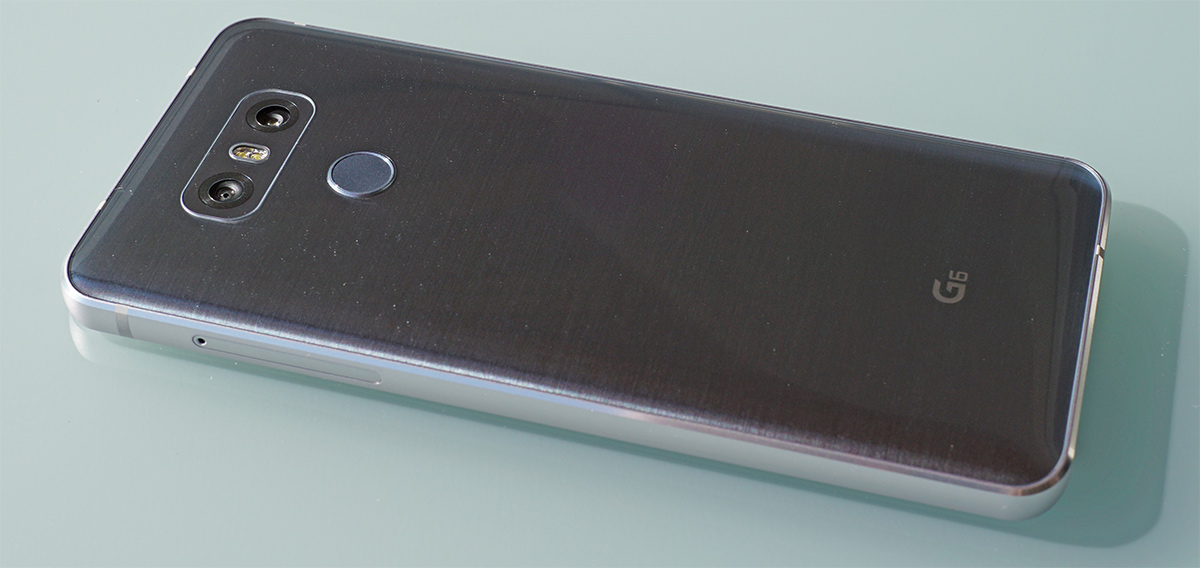
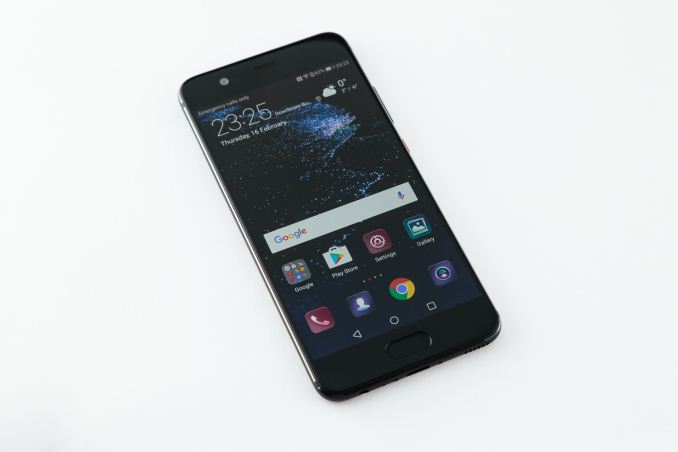
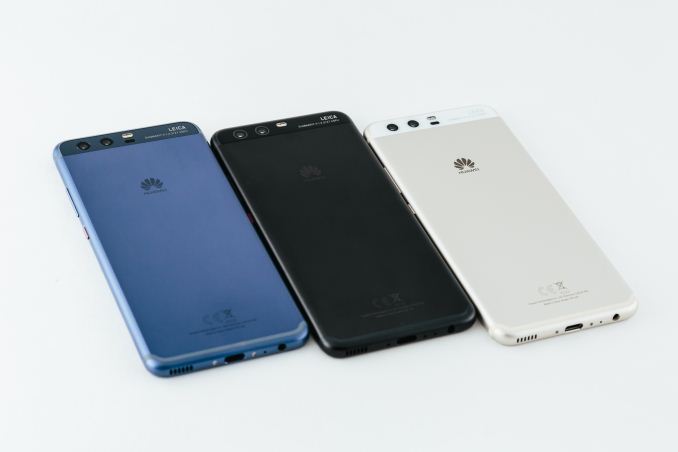
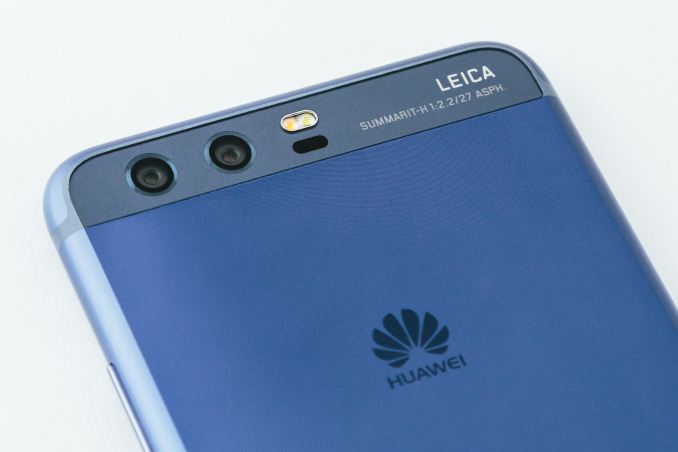

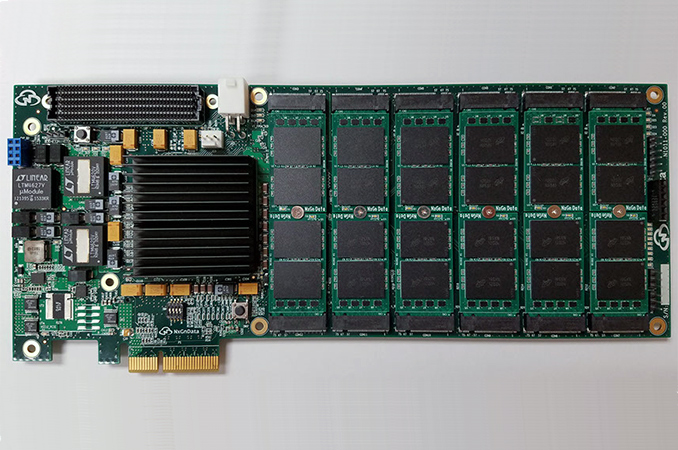

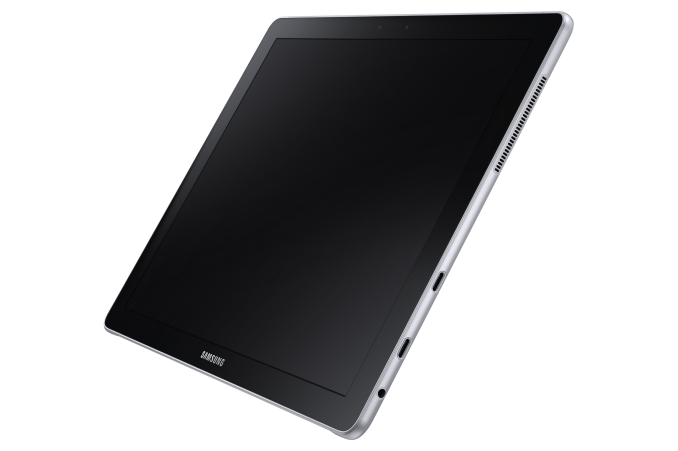
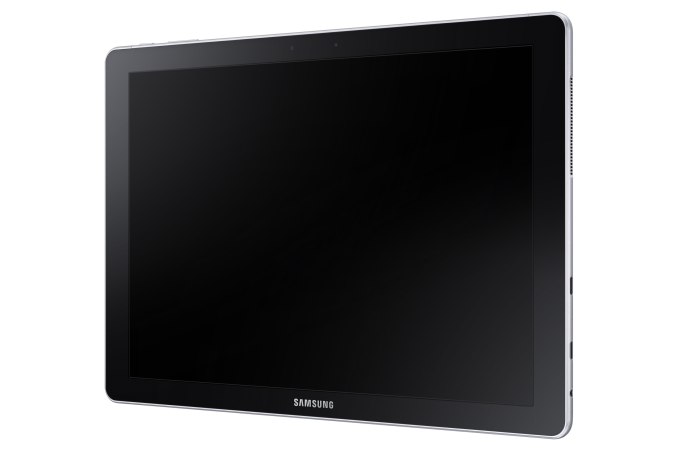
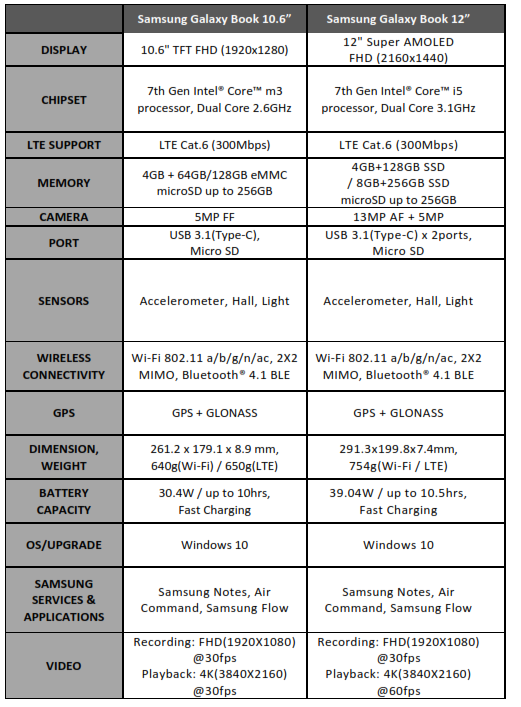
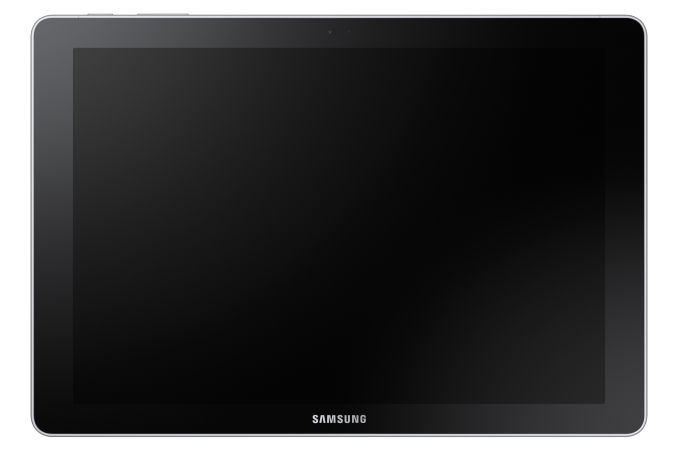
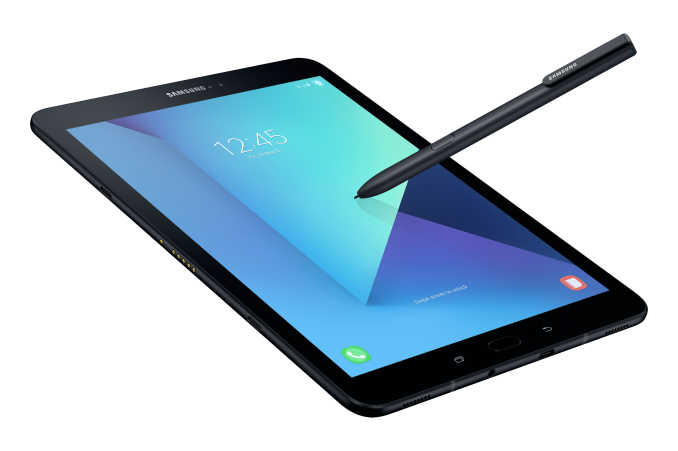
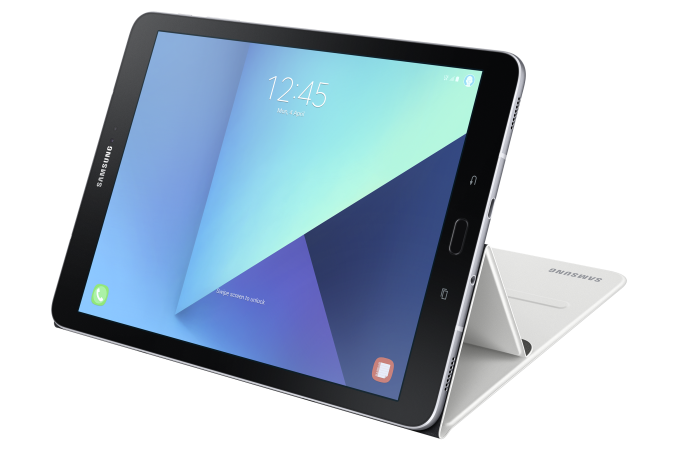
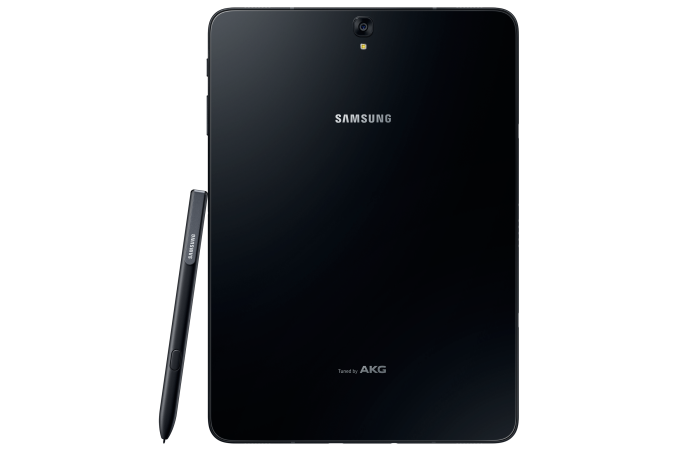

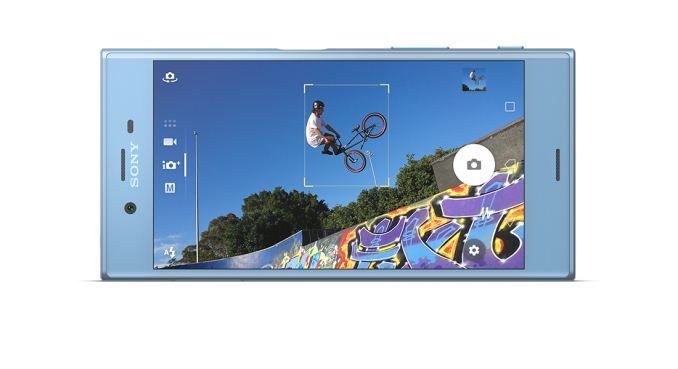
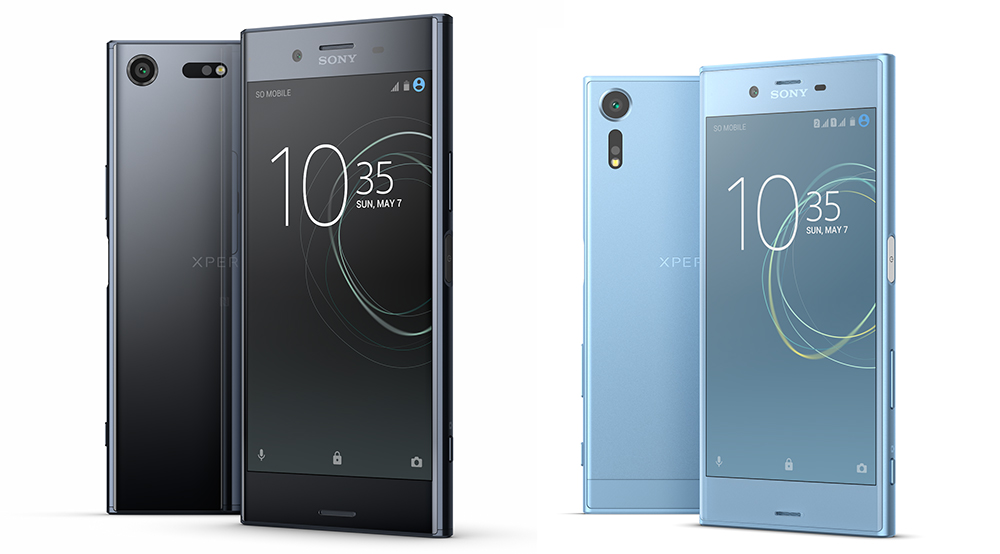

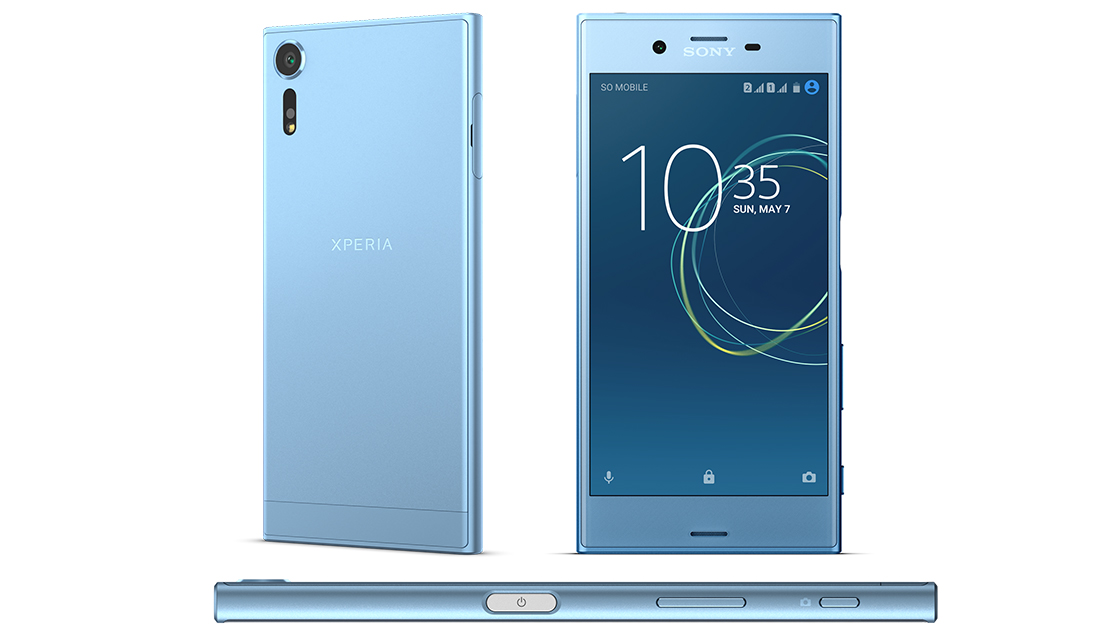
















Bookmarks